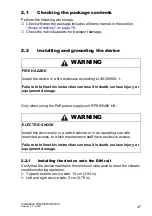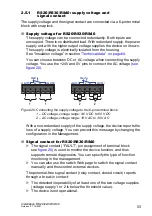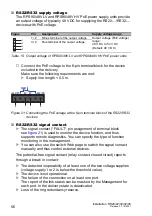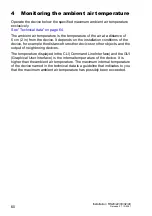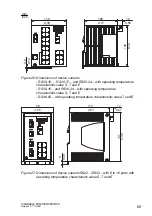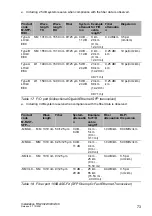
58
Installation RS20/22/30/32/40
Release 07 10/2021
2.8
Operating the device
By connecting the supply voltage via the terminal block, you start the
operation of the device.
2.9
Connecting data cables
Note the following general recommendations for data cable connections in
environments with high electrical interference levels:
Keep the length of the data cables as short as possible.
Use optical data cables for the data transmission between the buildings.
When using copper cables, provide a sufficient separation between the
power supply cables and the data cables. Ideally, install the cables in
separate cable channels.
Verify that power supply cables and data cables do not run parallel over
longer distances. To reduce inductive coupling, verify that the power
supply cables and data cables cross at a 90° angle.
Use shielded data cables for gigabit transmission via copper cables, for
example SF/UTP cables according to ISO/IEC 11801. Exclusively use
shielded data cables to meet EMC requirements according to EN 50121-
4 and marine applications.
Connect the data cables according to your requirements.
See “Ethernet ports” on page 38.
2.10
Filling out the inscription label
The information field for the IP address helps you identify your device.
Figure 22: Label area for IP address of device
1 – IP address of device (label area)
2 – MAC address of device (label)
RS20
LS
DA
RM
+ 24V(P1)
0V
0V
FAULT
+ 24V(P2)
Stand by
A
u
fk
le
b
e
r M
A
C
-A
d
re
ss
e
IP
-A
DDR
E
S
S
2
LS
DA
1
3
5
7
4
6
8
V.24
USB
P
Stand by
FAULT
RM
ON
2
1




